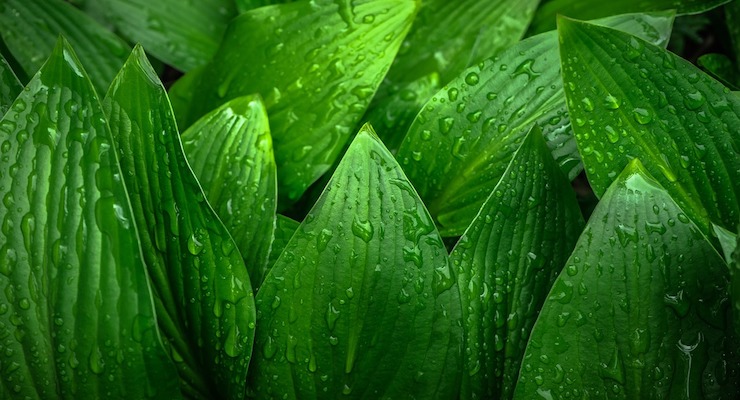Scoperto un nuovo tipo di fotosintesi / A new type of photosynthesis discovered
Scoperto un nuovo tipo di fotosintesi / A new type of photosynthesis discovered
Segnalato dal Dott. Giuseppe Cotellessa / Reported by Dr. Giuseppe Cotellessa

Un nuovo tipo di clorofilla, scoperto recentemente, permetterebbe agli organismi acquatici che vivono nelle zone più profonde degli oceani di completare la fotosintesi anche quando le lunghezze d’onda della luce solitamente utilizzate per questo processo non sono a disposizione
Le piante e i cianobatteri (organismi simili alle alghe) solitamente utilizzano la clorofilla, un pigmento, per trasformare la luce in energia chimica durante il processo che prende il nome di fotosintesi. Esistono vari tipi di clorofilla, che hanno compiti diversi e che assorbono tipi di luce differenti, ma in generale la maggior parte degli organismi che vive sulla superficie della terra utilizza per questo processo la clorofilla a, che assorbe luce rossa, con lunghezze d’onda comprese tra i 680 e i 700 nanometri, e riflette luce verde, blu e viola.
Ma come fanno gli organismi che vivono nelle zone più profonde degli oceani, dove la luce di queste lunghezze d’onda non arriva se non in piccolissime quantità? E’ quello che si sono chiesti i ricercatori dell’Imperial College London in uno studio pubblicato su Science. Durante la ricerca, hanno infatti scoperto una specie di cianobatteri in grado di utilizzare luce con lunghezze d’onda inferiori a quelle assorbite da piante e batteri sulla superficie, in un nuovo tipo di fotosintesi che utilizza una speciale clorofilla.
Questa specie, che prende il nome di Chroococcidiopsis thermalis, è in grado di utilizzare luce con lunghezza d’onda di 727 nanometri per la fotosintesi. Questo avviene grazie a pigmenti già utilizzati da altri cianobatteri in superficie, clorofilla a e clorofilla d; un ruolo fondamentale è tuttavia giocato anche dalla clorofilla f, recentemente scoperta e ritenuta, fino ad ora, non importante per la conversione da luce ad energia. E tuttavia, in questa specie, è proprio la clorofilla f a permettere a questi batteri di generare energia quando scarseggia la luce rossa solitamente assorbita in superficie.
Secondo i ricercatori, questa scoperta potrebbe essere utilizzate in futuro per creare piante più resistenti ed in grado di adattarsi a condizioni di luce variabili. Ma le possibili applicazioni non sono limitate al nostro pianeta. Grazie alla sua incredibile resistenza a condizioni ambientali estreme, Chroococcidiopsis è considerato uno dei pochi organismi che potrebbe essere in grado di sopravvivere su Marte – e gli scienziati hanno già ipotizzato un suo possibile ruolo nella formazione di un ambiente aerobico sul pianeta rosso. Chroococcidiopsis potrebbe infatti aiutare a produrre ossigeno e fornire materiale organico in grado di originare, potenzialmente, del terreno fertile che potrebbe essere utilizzato per crescere cibo su Marte.
ENGLISH
A new type of chlorophyll, discovered recently, would allow aquatic organisms living in the deepest parts of the oceans to complete photosynthesis even when the wavelengths of light usually used for this process are not available
Plants and cyanobacteria (organisms similar to algae) usually use chlorophyll, a pigment, to transform light into chemical energy during the process that takes the name of photosynthesis. There are various types of chlorophyll, which have different tasks and which absorb different types of light, but in general most of the organisms that live on the earth's surface use chlorophyll a, which absorbs red light, with wavelengths for this process between 680 and 700 nanometers, and reflects green, blue and purple light.
But how do the organisms that live in the deepest areas of the oceans, where the light of these wavelengths does not come in very small quantities? This is what the Imperial College London researchers asked in a study published in Science. During the research, they discovered a kind of cyanobacteria able to use light with wavelengths lower than those absorbed by plants and bacteria on the surface, in a new type of photosynthesis that uses a special chlorophyll.
This species, which takes the name of Chroococcidiopsis thermalis, is able to use light with a wavelength of 727 nanometers for photosynthesis. This happens thanks to pigments already used by other cyanobacteria on the surface, chlorophyll a and chlorophyll d; a fundamental role is played by chlorophyll f, recently discovered and considered, until now, not important for the conversion from light to energy. And yet, in this species, it is the chlorophyll f that allows these bacteria to generate energy when the red light usually absorbed on the surface is scarce.
According to the researchers, this discovery could be used in the future to create more resistant plants that can adapt to varying light conditions. But the possible applications are not limited to our planet. Thanks to its incredible resistance to extreme environmental conditions, Chroococcidiopsis is considered one of the few organisms that could survive on Mars - and scientists have already hypothesized its possible role in the formation of an aerobic environment on the red planet. Chroococcidiopsis could in fact help to produce oxygen and provide organic material that could potentially produce fertile soil that could be used to grow food on Mars.
Da;
https://www.galileonet.it/2018/06/scoperto-nuovo-tipo-fotosintesi/



Commenti
Posta un commento